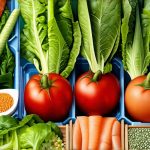The relentless pursuit of efficiency in modern life has often come at a hidden cost – a disconnect from the sources of our sustenance and an escalating energy demand that strains planetary resources. We’ve optimized for speed and convenience, frequently prioritizing quantity over quality, leading to food systems characterized by long supply chains, intensive agriculture, and significant waste. Simultaneously, our reliance on fossil fuels to power these systems, coupled with increasingly disposable consumption patterns, has created a precarious situation where both ecological health and personal well-being are threatened. Recognizing this interconnectedness is the first step toward forging a more sustainable future, one that acknowledges the essential relationship between how we produce and consume energy, and how we cultivate and nourish ourselves.
This isn’t simply an environmental issue; it’s a cultural one. The industrialization of food has eroded traditional knowledge surrounding food production, preparation, and preservation. We’ve lost touch with skills passed down through generations – the art of preserving harvests, understanding seasonal rhythms, and appreciating the time and effort required to bring food to our tables. This loss contributes to a sense of alienation from our food sources, making it easier to accept unsustainable practices and fueling a cycle of convenience that prioritizes speed over substance. Reclaiming these lost arts, alongside embracing energy conservation strategies, offers a powerful path toward resilience – both for individuals and communities alike.
The Intertwined Nature of Food Systems & Energy Use
The link between our food systems and energy consumption is profound and often overlooked. From the farm to the fork, every stage of the food production process requires substantial energy inputs. Intensive agriculture, reliant on synthetic fertilizers (produced using fossil fuels), heavy machinery, and irrigation pumps, is an incredibly energy-intensive undertaking. Transportation – moving produce across vast distances – adds significantly to this carbon footprint. Processing, packaging, storage (often requiring refrigeration) and retail all contribute further. Even seemingly innocuous choices like buying out-of-season fruits and vegetables come with a hidden energetic cost tied to greenhouse cultivation or long-distance shipping.
Consider the energy embedded within a single apple: the fuel used to power tractors during planting and harvesting, the electricity powering sorting and packaging lines, the gasoline consumed by trucks transporting it to warehouses and supermarkets, and finally, the electricity maintaining refrigeration in your home. This “embodied energy” represents a significant environmental impact that is rarely factored into our purchasing decisions. Moreover, food waste – an enormous global problem – compounds these issues. Wasted food isn’t just wasted nourishment; it’s wasted energy, water, land, and labor. If you are experiencing fatigue after illness, consider post-diarrhea fatigue recovery options.
Shifting toward more localized and sustainable food systems – embracing principles of slow food – is inherently connected to energy conservation. Shortening supply chains reduces transportation costs, supporting local farmers diminishes reliance on industrial agriculture, and reducing waste minimizes the overall energetic footprint of our meals. This approach isn’t about deprivation; it’s about mindful consumption that prioritizes quality, seasonality, and ecological responsibility. Understanding gut inflammation can also help you understand energy levels.
Slow Food as a Form of Energy Resilience
The slow food movement, born in Italy in the 1980s as a reaction to fast food culture, advocates for a holistic approach to food that values biodiversity, local traditions, and conscious consumption. It’s about reclaiming pleasure in eating, connecting with producers, and understanding the stories behind our food. But beyond its cultural aspects, slow food embodies principles of energy resilience. By prioritizing locally sourced ingredients, seasonal produce, and traditional cooking methods, it inherently reduces reliance on energy-intensive industrial processes.
A key component of this approach is food preservation – techniques like canning, pickling, fermenting, drying, and root cellaring that allow us to extend the shelf life of food without relying heavily on refrigeration or other forms of energy storage. These methods not only reduce waste but also reconnect us with ancestral skills and foster a deeper appreciation for the rhythms of nature. Furthermore, slow cooking methods – like braising, stewing, and simmering – often require less energy than quick-cooking techniques that rely on high heat.
Embracing slow food isn’t necessarily about radical lifestyle changes; it’s about making conscious choices in our daily lives. This could involve visiting farmers markets, joining a community-supported agriculture (CSA) program, growing some of your own food, or simply choosing to cook more meals at home using fresh, seasonal ingredients. It’s a shift toward valuing the process as much as the product, and recognizing that true nourishment comes not just from what we eat, but from how it is grown, prepared, and shared. If you have experienced stomach issues, digestive recovery can be a great next step.
Cultivating Home Food Production
Growing your own food, even on a small scale, is one of the most powerful ways to reduce your energetic footprint and enhance food security. It doesn’t require acres of land; container gardening, vertical farming, and community gardens offer accessible options for urban dwellers. The benefits extend far beyond simply reducing transportation energy:
- Reduced packaging waste
- Increased control over growing practices (avoiding pesticides and herbicides)
- Enhanced nutritional value (freshly harvested produce retains more nutrients)
- A deeper connection to nature and the food cycle
- Opportunities for learning and skill-sharing within communities.
Starting a home garden can be as simple as planting a few herbs in pots on your windowsill or dedicating a small patch of land to growing vegetables. Success doesn’t require expertise; there are countless resources available online and through local gardening clubs. Focusing on companion planting – strategically pairing plants that benefit each other – can further enhance yields and reduce the need for chemical interventions. Permaculture principles, which emphasize designing sustainable ecosystems, offer a holistic approach to food production that minimizes energy inputs and maximizes resource efficiency. Consider food energy patterns when planning your garden.
Reducing Food Waste: A Conservation Imperative
Food waste is a massive global problem with significant environmental consequences. Roughly one-third of all food produced worldwide is lost or wasted – representing an enormous squandering of resources, including energy. Addressing this issue requires a multi-pronged approach that tackles waste at every stage of the food supply chain.
Here are some practical steps individuals can take:
1. Plan meals carefully and create shopping lists to avoid impulse purchases.
2. Store food properly to maximize its shelf life – understanding optimal storage conditions for different produce items is crucial.
3. Embrace “ugly” produce – fruits and vegetables that may not meet cosmetic standards but are perfectly edible.
4. Utilize leftovers creatively – transform them into new dishes or freeze them for future use.
5. Compost food scraps to create nutrient-rich soil amendment for your garden.
Beyond individual actions, supporting policies and initiatives that address food waste throughout the supply chain is essential. This includes encouraging retailers to reduce cosmetic standards, promoting date labeling clarity (distinguishing between “best by” and “use by” dates), and investing in infrastructure for food recovery and redistribution. Zero-waste cooking – a philosophy focused on minimizing waste through careful planning and creative repurposing of ingredients – offers a powerful framework for embracing mindful consumption. If you’re experiencing cramping and urgency from food, reducing waste may help you understand triggers.
Harnessing Traditional Preservation Techniques
The art of food preservation is experiencing a resurgence as people seek ways to reduce their reliance on energy-intensive storage methods and reconnect with ancestral skills. Techniques like canning, pickling, fermenting, drying, and root cellaring not only extend the shelf life of food but also offer unique flavor profiles and health benefits.
Canning involves sealing food in airtight jars and heating it to destroy microorganisms – allowing for long-term storage at room temperature. Pickling utilizes vinegar or brine to preserve food while imparting a tangy flavor. Fermentation, a process that harnesses the power of beneficial bacteria, creates foods like sauerkraut, kimchi, and yogurt – offering probiotic benefits and enhancing digestibility. Drying removes moisture from food, inhibiting microbial growth and concentrating flavors. Root cellaring, an ancient method of storing vegetables in cool, dark, humid environments, requires minimal energy input.
Learning these techniques can be incredibly empowering, allowing individuals to take control of their food supply and reduce their environmental impact. Numerous resources are available online and through local workshops – providing guidance on safe practices and effective preservation methods. Reclaiming these lost arts isn’t just about preserving food; it’s about preserving culture, knowledge, and a deeper connection to the land. Understanding slow digestion can help you choose the best preservation methods.


















